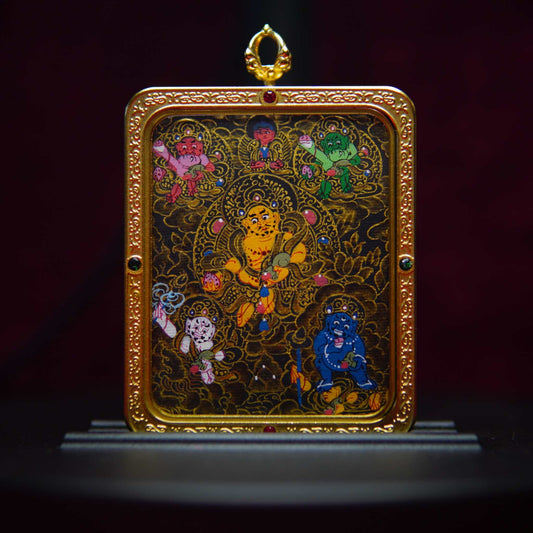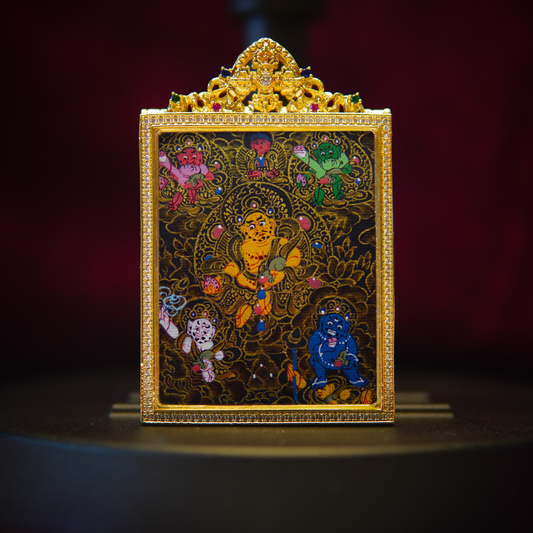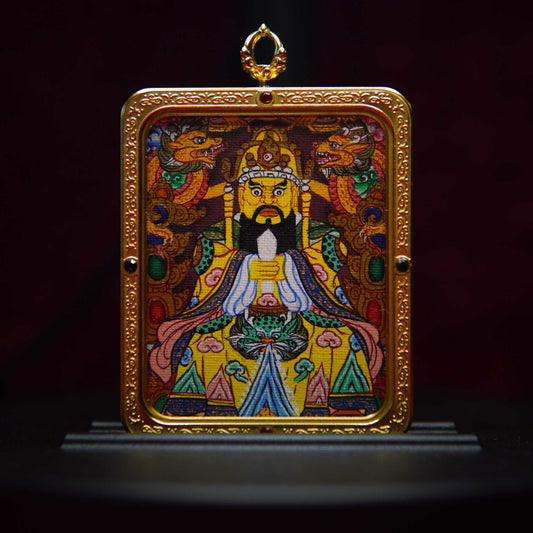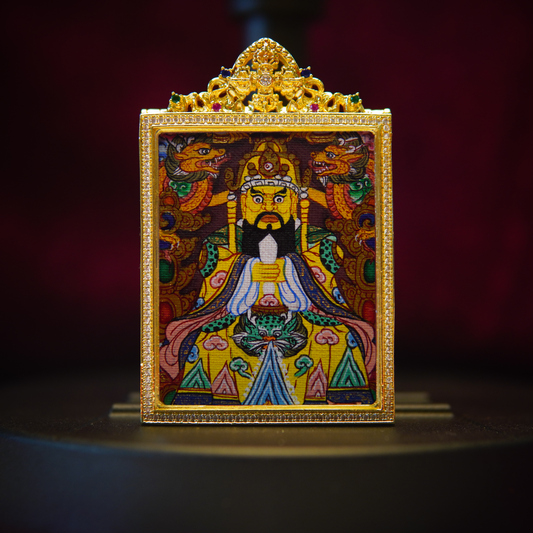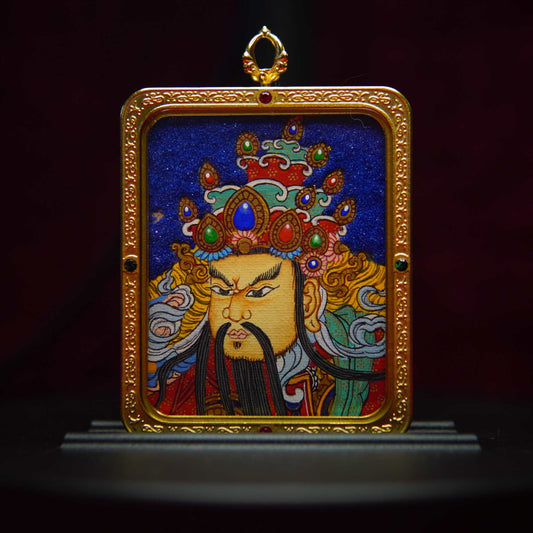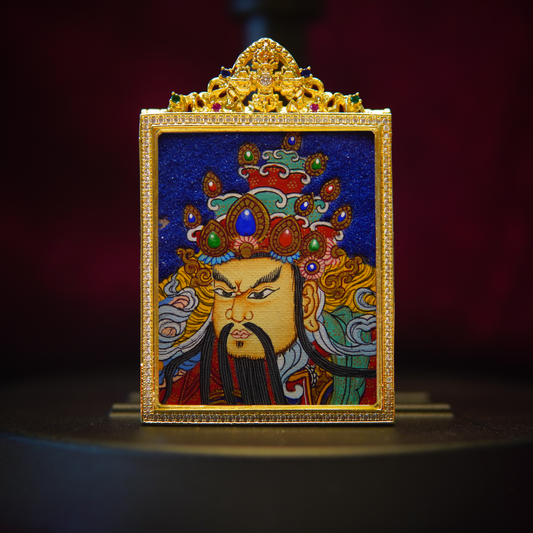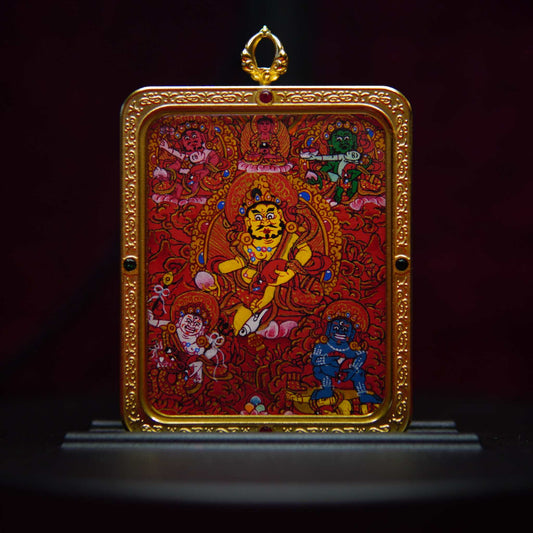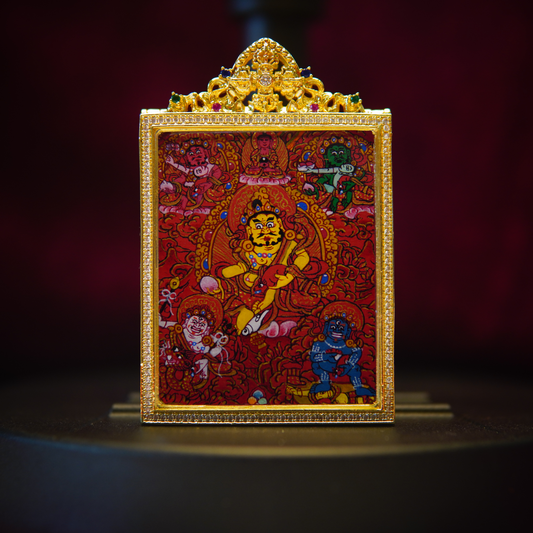仏教とヒンズー教におけるマハーカーラとは誰ですか?
chenHenryヒンドゥー教と仏教の両方において、マハーカーラという名は畏敬の念、神秘、そして計り知れない霊力を呼び起こします。 「大いなる時間」あるいは「偉大なる黒き者」を意味するその名を持つ神、マハーカーラは、時間、破壊、守護、そして変容の力を象徴しています。燃え盛る髪、牙、そして頭蓋骨といった恐ろしい外見ですが、悪を滅ぼし、叡智と解放への道を切り開く強力な守護者です。
では、マハーカーラとは一体何者なのでしょうか?なぜヒンドゥー教と仏教の両方の伝統に登場するのでしょうか?そして、彼の存在は現代のスピリチュアルな探求者にとってどのような意味を持つのでしょうか?

🔱ヒンドゥー教におけるマハーカーラ:カーリーの配偶者であり時間の神
ヒンドゥー教の神話において、マハーカーラは、ヒンドゥー教の三位一体(トリムルティ)における破壊神であり変革神であるシヴァの獰猛な一面とされています。マハーカーラは、時間、死、そして再生の女神カーリーと深く結びついています。実際、マハーカーラはカーリーの配偶者、あるいはカーリーの恐ろしいエネルギーの男性版として描かれることもあります。
-
ヒンドゥー教における象徴性:
マハーカーラは悪ではありません。彼の破壊的な性質は、自我、幻想、そして時間そのものの破壊を象徴しています。彼は時間を超えた存在であり、永遠であり絶対的です。 -
寺院と礼拝:
マハーカーラは、特にシヴァ派とシャクティ派の伝統において崇拝されています。最も有名なマハーカーラ寺院の一つはインドのウッジャインにあり、そこでは彼は至高の神であり、勇猛果敢な守護者として崇められています。
🕉️仏教におけるマハーカーラ:怒れる法の守護者
チベット仏教において、マハーカーラは「法の守護者」を意味する怒れる神(ダルマパーラ)です。彼は黒、青、四本腕、六本腕など様々な姿で現れますが、常に獰猛な存在として現れ、そのエネルギーは障害を取り除き、無知を滅ぼし、悟りへの道を歩む修行者を守るために用いられます。
-
起源:
仏教において、マハーカーラは慈悲の菩薩である観音菩薩(チェンレジ)の化身とされています。これは、彼の二面性を示しています。恐ろしい姿をしている一方で、その心は衆生への慈悲に満ちています。 -
チベットの実践における機能:
-
霊的および世俗的な障害を取り除く
-
寺院、ラマ僧、修行者を保護する
-
妄想とエゴを切り裂く
-
悪魔の力や悪業を抑えるのに役立ちます
-
-
人気のフォーム:
-
六臂のマハーカーラ(ゴンポ・チャグドゥルク) -カギュ派でよく見られる
-
四腕のマハーカーラ–サキャ派と関連
-
パンジャラナータ マハーカーラ–金剛乗タントラの守護者

-
🎨芸術と象徴:マハーカーラがなぜそれほどまでに獰猛に見えるのか
マハーカーラはしばしば次のように描写されます。
-
暗い、または黒い体(形を超えた究極の現実を象徴する)
-
燃えるような眉毛と髪(無知に対する内なる炎と怒りを表す)
-
頭蓋骨、骨の装飾品、虎の皮(恐れ知らずと自我の破壊を象徴)
-
武器、皮、儀式用の道具を持っている
恐ろしい存在ではあるものの、その姿のあらゆる側面には象徴的な意味があり、文字通りの暴力ではありません。彼の怒りは生き物を傷つけるためではなく、内なる悪魔や精神的な成長の障害を排除するためにあります。

🔮なぜ人々は今日マハーカーラを身に着けるのか
現代では、人々はマハーカーラのお守りやペンダントを身に着けたり、タンカ画を飾ったりするのにはいくつかの理由があります。
-
精神的な保護:
彼は、負のエネルギー、呪い、または霊的な害を追い払う猛烈な守護神であると考えられています。 -
内なる強さ:
マハーカーラは、私たちの中にある、障害、トラウマ、自我に明晰さと強さを持って立ち向かう、恐れを知らない力を表しています。 -
変革の象徴:
金を浄化する火のように、マハーカーラは幻想を焼き尽くし、人々が執着を手放してより深い認識へと踏み出すことを助けます。 -
文化的なつながり:
特にチベットやヒマラヤの文化では、彼の像は深く崇拝されており、家族間で受け継がれることがよくあります。
🧿禅堂タンカのマハーカーラペンダント– 古代の力と現代とのつながり
ZendoThangka.comでは、伝統的な儀式を通じてそれぞれ独自に作られ、祝福された手描きのマハカラ タンカ ペンダントを販売しています。
-
🔹 職人が描いた神聖なイメージ
-
🔹 チベット風の保護デザイン
-
🔹 仏教の僧侶から力を与えられる
-
🔹 強さと知恵の盾として心の近くに身に着けられます

✨結論:マハーカーラの怒りは偽装された愛である
ヒンドゥー教においても仏教においても、マハーカーラは悪魔ではなく、慈悲から生まれた獰猛な守護者です。彼の恐ろしい姿は、真実を守り、幻想を打ち砕き、衆生の悟りを助けるという彼の強い誓いを反映しています。
神のイメージを身に着けたり、神の存在を身近に保つことは、恐れのなさ、明晰さ、そして神の加護をあなたの人生に招き入れることです。
他のすべてが失敗したとき、マハーカーラは変わることなく、揺るぎなく、そして守るという誓いを固く守り続けます。

